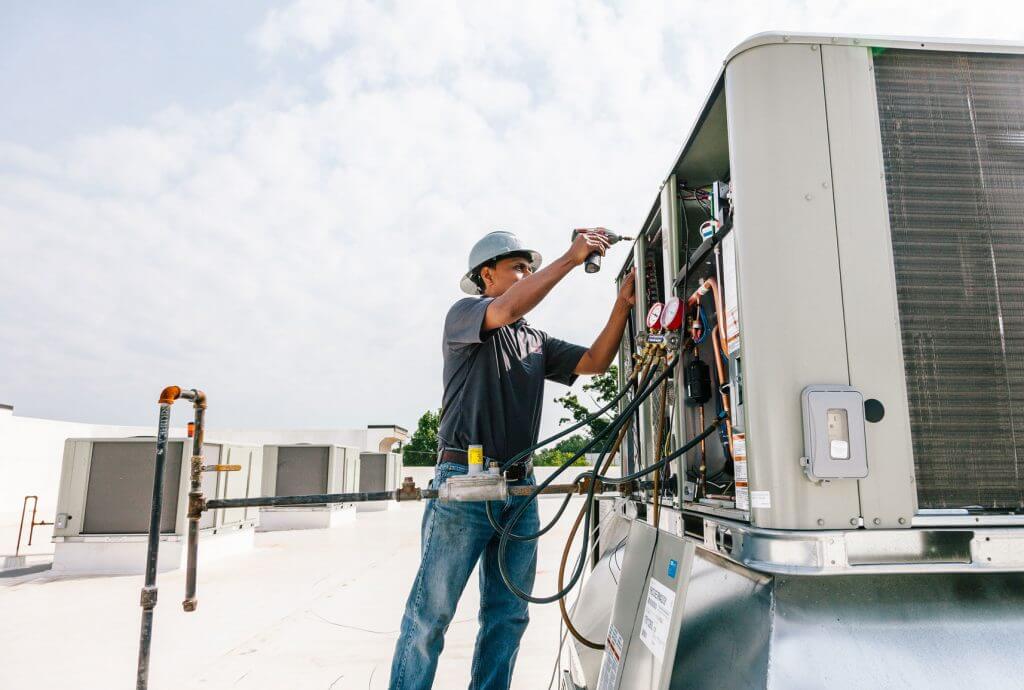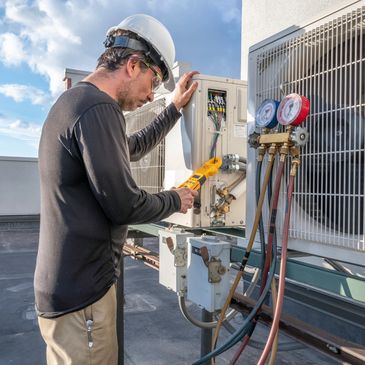The Importance of A/c Installment: Key Considerations for a Comfortable Indoor Environment
The setup of a cooling and heating system is a critical component in achieving an energy-efficient and comfy indoor setting. Nevertheless, the process entails numerous nuanced considerations that exceed just choosing a system off the shelf. Variables such as the viability of the system for details structure needs, correct sizing to circumvent inefficiencies, and the experience of professionals for a high quality installation play critical roles. The fostering of innovative innovations can considerably enhance system efficiency. Yet, comprehending these complexities is merely the start of guaranteeing optimal interior comfort. What are the crucial components that dictate effective a/c implementation?
Choosing the Right System

When selecting an a/c system, it is critical to review the capability needed to successfully heat or cool the space without exhausting the system, which can cause increased wear and functional prices. Consulting with a specialist HVAC service provider can give useful insights into picking a system that lines up with both the awaited use and the architectural layout patterns of the building.
Additionally, taking into consideration the combination of smart modern technology can improve system management and surveillance, providing better control and prospective expense financial savings. By diligently examining these variables, one can make sure the selection of a HVAC system that not just meets prompt needs yet also adds to long-term functional sustainability and resident convenience.
Understanding Energy Performance
Comprehending power efficiency is crucial when considering a cooling and heating installation, as it directly influences both the environmental footprint and the functional prices of the system. High-efficiency heating and cooling devices are designed to utilize much less power to achieve the exact same degree of comfort as less effective versions, thereby decreasing energy costs and advertising sustainability. The efficiency of an a/c system is typically indicated by scores such as SEER (Seasonal Power Performance Proportion) for ac unit or AFUE (Yearly Fuel Utilization Effectiveness) for heating systems. Greater scores indicate better performance and decreased energy usage.

Purchasing an energy-efficient a/c system not only converts to cost financial savings but likewise contributes positively to ecological conservation by decreasing greenhouse gas emissions. In addition, numerous territories offer motivations or rebates for the setup of high-efficiency systems, further improving their economic appeal.
When reviewing energy effectiveness, take into consideration advanced functions such as variable rate motors, wise thermostats, and zoning capacities. These developments improve the system's capacity to get used to varying need, thereby optimizing power usage. It is essential to seek advice from HVAC professionals who can give understandings into the most effective choices customized to details climate conditions and usage patterns, making sure optimal performance and convenience.
Importance of Proper Sizing

Conversely, a small heating and cooling system will certainly have a hard time to get to the preferred temperature level, particularly throughout extreme climate conditions. This can cause continuous procedure, leading to greater power costs and possible overheating of system elements. In addition, insufficient sizing can bring about inconsistent temperature level circulation, triggering particular areas of a building to be also warm or as well cool.
To attain the correct sizing, a complete load computation is crucial. This includes analyzing various aspects such as the structure's square footage, insulation levels, window kinds, and local environment problems. By accurately figuring out the home heating and cooling down needs of an area, cooling and heating professionals can recommend systems that make certain efficient procedure, lowered energy consumption, and improved indoor comfort.

Ensuring Top Quality Installment
A smooth Heating and cooling installation is the foundation of a system's longevity and efficiency. This professional must possess comprehensive understanding of varied systems and be proficient at analyzing the particular demands of the building.
Correct setup surpasses simple positioning of equipment. It includes precise calibration to make sure optimal air flow, reliable energy usage, and consistent temperature circulation. This consists of precise ductwork about his installment, ensuring connections are safe and secure and leak-free, which is critical for preserving system performance and indoor air high quality.
In addition, the implementation of sophisticated analysis devices during setup can identify potential problems early, protecting against costly repair work and prolonging the life-span of the system. The contractor ought to additionally ensure that all components work which the system abides by local building codes and policies.
Routine Upkeep Practices
As soon as the structure for a high-performing cooling and heating system is developed with high quality installation, the emphasis needs to move to routine maintenance techniques to make certain from this source ongoing effectiveness and reliability. Regular upkeep not only extends the life-span of the system yet likewise enhances interior air high quality, minimizes energy intake, and stops expensive repairs. Essential upkeep tasks consist of consistently altering air filters, cleaning evaporator and condenser coils, and evaluating the system for clogs or leaks.
This straightforward task can considerably boost air circulation and system efficiency. Furthermore, expert service technicians should examine the system every year, examining for refrigerant levels, electrical connections, and general system efficiency.
Focus to ductwork is also crucial; sealing and cleaning up air ducts consistently prevents air loss and contamination. Executing a maintenance routine makes sure that small concerns are resolved prior to they rise, safeguarding the system's operational integrity. By adhering to these maintenance practices, property owners can optimize their heating and cooling system's performance and preserve a comfortable indoor environment year-round.
Conclusion
HVAC installation plays a vital role in guaranteeing indoor comfort and optimizing power performance. air conditioning installation Brownwood TX. By picking a proper system tailored to specific structure demands, comprehending energy performance, and making sure appropriate sizing, inefficiencies can be decreased. The participation of competent contractors warranties high quality installation, while the assimilation of sophisticated technologies boosts system performance and surveillance. Routine maintenance is necessary for prolonging system life-span and enhancing indoor air high quality, thereby cultivating a comfy and sustainable living or workplace.
A number of kinds of HVAC systems are offered, consisting of split systems, hybrid systems, duct-free systems, and packaged heating and air systems, each with unique benefits and constraints.
Understanding energy effectiveness is essential when thinking about a Cooling and heating installation, as it directly affects both the ecological impact and the functional prices of the system. The efficiency of a Heating and cooling system is normally shown by rankings such as SEER (Seasonal Power Efficiency Ratio) for air conditioners or AFUE (Annual Fuel Usage Effectiveness) for heating systems (air conditioning installation Brownwood TX).As soon as the structure for a high-performing Cooling and heating system is developed via top quality installment, the emphasis must move to routine maintenance practices to ensure ongoing performance and integrity. Furthermore, expert technicians should inspect the system annually, examining for cooling agent degrees, electric connections, and overall system efficiency